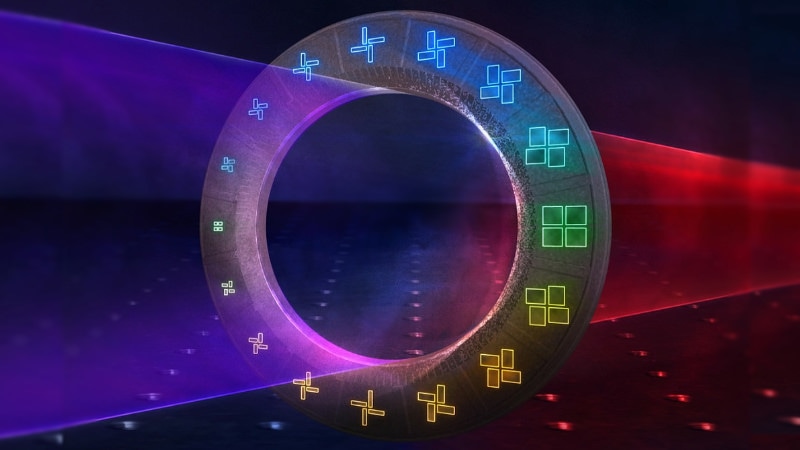May 4 2018
As a first ever attempt, researchers have devised a technique for modeling the interaction between twisted molecules and light when the molecules transition from left-handed to right-handed versions, or vice versa. The transitional forms provide an in-depth knowledge about the material symmetries, and their unanticipated attributes could lead to enhanced design of telecommunications components.
 An impression of a chiral molecule moving through various configurations as it transitions from one handedness to the other. (Image credit: Ventsislav Valev and Joel Collins)
An impression of a chiral molecule moving through various configurations as it transitions from one handedness to the other. (Image credit: Ventsislav Valev and Joel Collins)
Several molecules, including valuable chemicals and important pharmaceuticals, occur in two “chiral” forms—with the same chemical structure arranged as mirror images, or left-handed and right-handed forms. This can modify their characteristics and thus plays a vital role in gaining complete knowledge of the interaction of the compound with other molecules, or light.
Characteristically, researchers could study only the left-handed or right-handed chiral form but nothing intermediate; but in principle, researchers would want to slowly morph a shape from one-handedness to the other and see the way the impacts of this change translate into physical properties.
At present, researchers from the Department of Physics at the University of Bath have collaborated with researchers at University College London, Belgium, and China, to devise a way to precisely achieve this.
As part of their novel technique, metallic nano-scale “artificial molecules” are manufactured, which are representative of 35 intermediate stages en route to a geometric transformation, from one-handedness to the other. At this nano-scale, the artificial molecule’s shape has an impact on its optical properties; hence, with the help of a twisted laser light, the researchers analyzed the properties of the various stages when the artificial molecules morphed from left- to right-handedness.
According to PhD student Joel Collins, “We were able to follow the properties of a chiral artificial molecule, as it was morphed from left- to right-handed form, through two different routes. No-one has done this before. Surprisingly, we found that each route leads to a different behavior.”
“We measured the difference in absorption of left and right circularly polarized light, known as circular-dichroism (CD). Along one route, the artificial molecules behaves as might be expected, with progressively decreasing CD, and eventually a reversal of the CD, for the mirrored structure. However, along the second route, the CD reversed several times, even before the structure changed handedness.”
The study has been reported in the Advanced Optical Materials journal.
Dr Ventsislav Valev, who headed the study, stated that “This is actually a very elegant idea but it has only become a possibility thanks to the recent advances in nanofabrication.”
“In chemistry, you can’t tune the twist of a chiral molecule, so every scientist who studies such molecules needs to tune the wavelength of light. We have demonstrated a new, complementary physical effect, where we fix the wavelength and tune the twist of the chiral artificial molecule. In many cases, our approach is more practical; for instance, when we’re designing telecoms components, where the optical wavelength is pre-determined.”
The Royal Society and the Engineering and Physical Sciences Research Council funded the study.